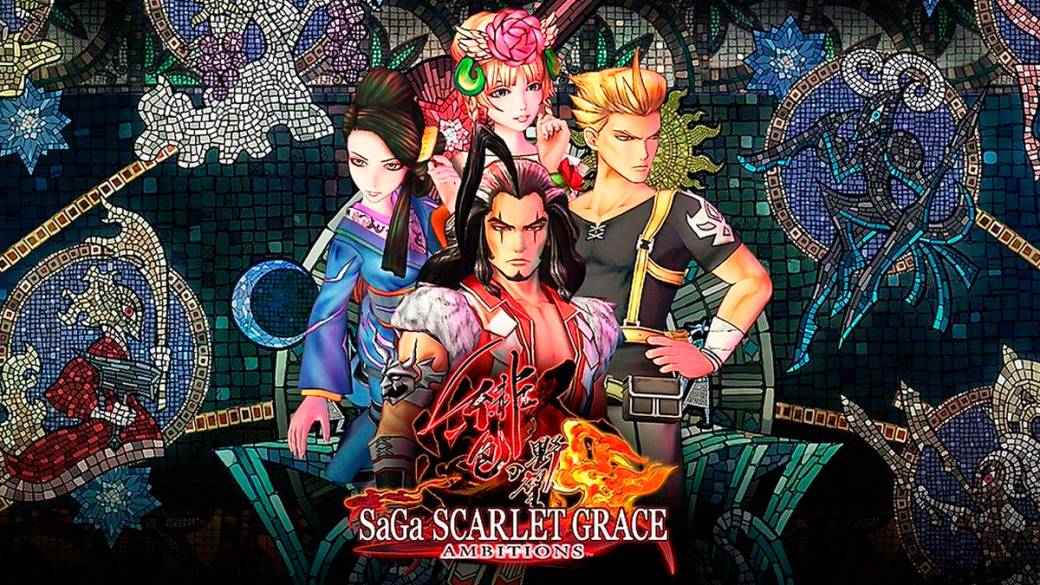
Despite having the franchise's key names among its creators, this return of SaGa remains in a game with original but unpolished ideas and improper production values of the legacy of its name.
No matter the field we talk about, the world of culture seems to have turned in recent times in a tendency to recover and give value to classic brands and products. A trend that in the case of the video game has been accompanied by the return of many franchises and titles that seemed to have fallen if not in the forgetfulness of the players, at least in the minds of their owners.
In the case of the franchise at hand, SaGa, after a long oblivion beyond a couple of very minor deliveries for mobile phones and browsers, Square Enix decided to recover the brand with an exclusive Japan game for PS Vita, SaGa Scarlett Grace, whose improved version now reaches us for current consoles with the addition of the “ambitions” coletilla.
Unfortunately, in this desire to revive the franchise, it does not seem that the Tokyo company wanted to dedicate a minimum of the ambition mentioned in the title. We are at a more borderline production with the expected of an indie title than with that of a large company, despite the care given in some aspects and the presence in the credits of key people in the history of this franchise.
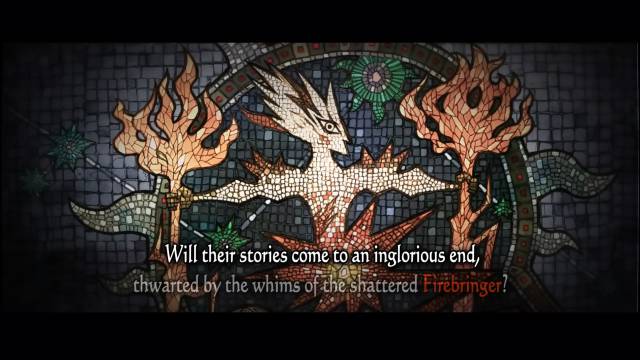
Irregular quality
After an intro of great quality that introduces us to the history of this world through spectacular mosaics and an epic score, the graphic aspect chosen is huge contrast, with 3D modeled characters, but presented as two-dimensional static images. It is a strange choice, which is not very attractive especially compared to the superb illustrations, but to which we get used quickly. Once in the game, music also catches our attention again, which at first positively surprises with the quality of its compositions and then falls into repetitiveness due to lack of melodies.

The choice of our character is made through a small survey that proposes the closest option to our personality, giving us the option of being a princess, a craftswoman, a farmer or an executioner. Each of these characters will propose their own story within the game world, although the stories have points in common. Once in the world, we find a map that contrasts sharply with that of other RPGs.
Here there are no random encounters with enemies or much to explore: we can only interact with the named places, shown through 2D illustrations, in which we can read conversations, fight, both, or, in the case of peoples , access options to improve our weapons or exchange them for materials and vice versa.
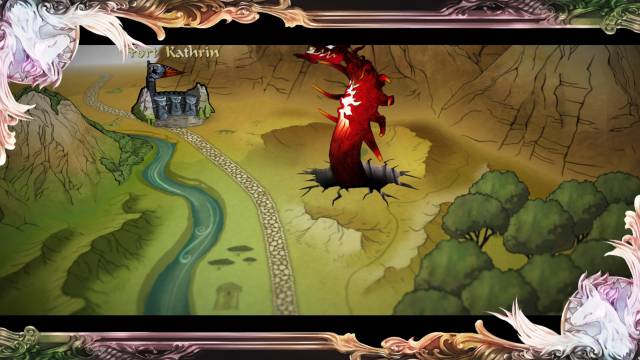
This decision to reduce exploration to visit specific points on a map allows us to present a large a priori map, but we will soon see that it conditions two aspects of the game. On the one hand, it forces us to have to constantly be “running” from side to side as there is nothing to explore as such. We will always be running away from something or going to look for someone, and visiting other sites will only show generic conversations, so the story ends up becoming very linear.
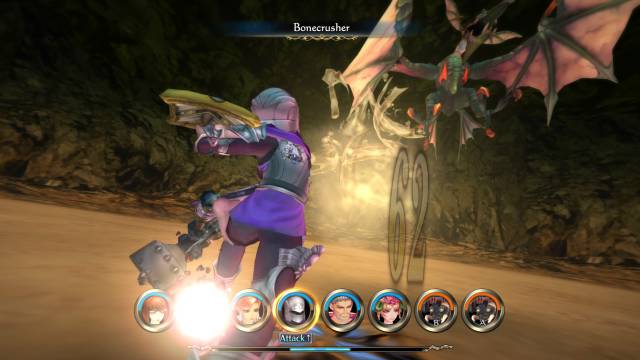
Original combat, but very random
The other conditioned aspect is that of the fighting. Although we are shown the difficulty of each encounter before entering it, really the absence of random combats and the presence of a limited number of places where we can fight again and again condition the acquisition of experience and improvement of our team. That makes us end up repeating the same battles at certain points where we are allowed (mines) to level up and obtain more resources. It works, but it is unattractive to the player.
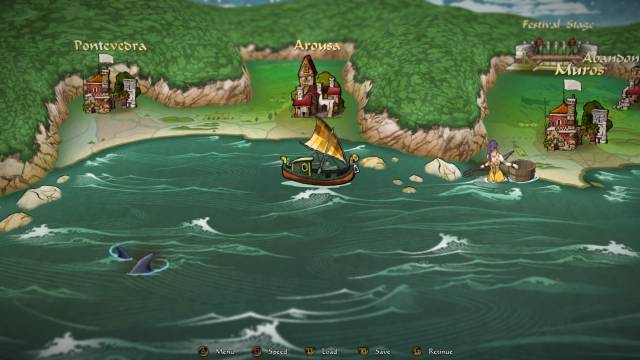
The fighting and its mechanics are precisely another of the most relevant aspects of this SaGa Scarlett Grace Ambitions. We are faced with a system based on a bar that orders the characters according to the moment they will act in combat. We have a series of stars, shared by our entire team, which we use when selecting each action of our characters.
If we choose those of a star, probably all members have their chance to act, but if we choose a more powerful attack, it is probably the only thing we can do in that turn. In addition, if the attack that interests us is one of our slower characters, we will have to suffer the enemy attacks before we can act.
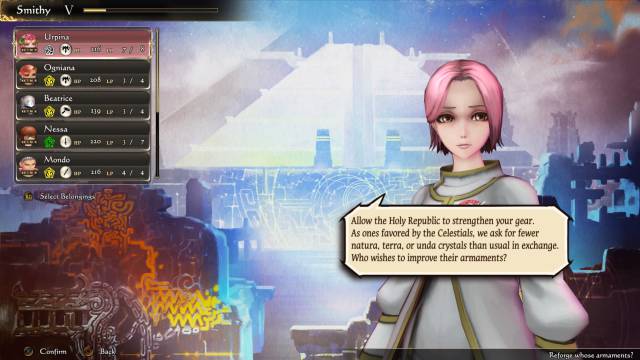
To give more variety to the combat system, if at the end of an enemy our allies meet (that is, at the end of an opponent located between two of our characters), a combined attack will automatically occur. The same will happen against us if we end up with an enemy located between two rivals, so you have to be careful when selecting who to attack.
In addition, the components of our team will gradually get tired and must rest after several combats, forcing us to rotate our starting team. Of course, such a separate statistic, everyone recovers automatically after each fight, so as long as one is still standing at the end of the battle, it does not matter to sacrifice any of them. We can also send them to do missions for themselves while they are out of the team.

The problem with this system is that it is too random, randomly conditioning the strategies that we could have made. To this it also contributes that the position of the enemies and allies changes each turn, making a rival that was at a stroke of death to be among enemies, for example; also the presence of blessings that will help us at certain times, or vice versa.
It does not help the enjoyment that the music of these fights, like that of the whole game, becomes repetitive. The same goes for the simple graphic aspect, which is more reminiscent of a game from several generations ago than to a current title, and even with little variety of enemies. In addition, those with problems with English may have difficulty following the story, since the game is not translated and basing their entire narrative on reading the conversations that follow.

It is a shame because both the script and art and music do have a high level and the talent of the team behind this title is noticeable, but really this Scarlet Grace falls short for the expected in a franchise title with the story and popularity of SaGa.
CONCLUSION
The good ideas and the talent of some of the minds behind previous installments of the frachy are weakened by the lack of ambition and polishing of a game that could have given much more of itself.
THE BEST
- The combat system is very original, far from the typical ideas to make the fighting more entertaining in turn.
- Wide cast of characters and weapons.
- Music (except for the lack of variety) and illustrations are at a great level.
WORST
- The game doesn't just polish its formula. The lack of exploration makes the game resume in reading and fighting.
- Technically it is quite poor.
- It becomes too linear,
Right
It is not the latest or the most original, nor does it have the best execution, but it can be fun if you like the genre. Good, but improvable.
